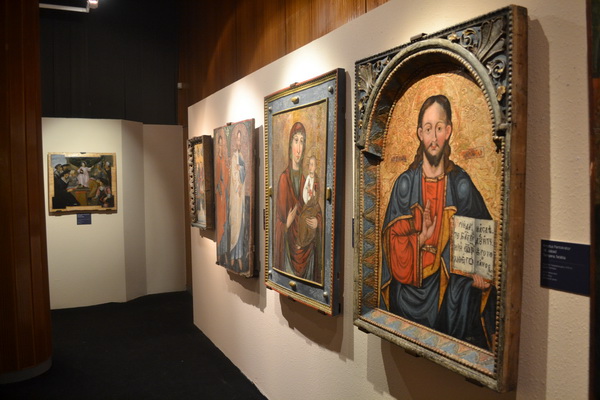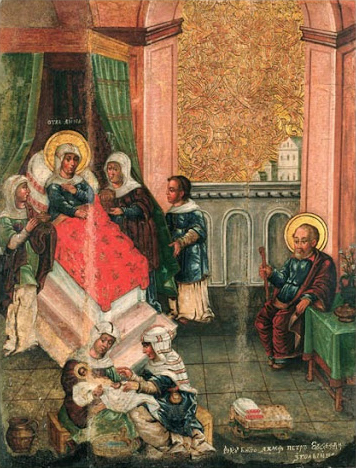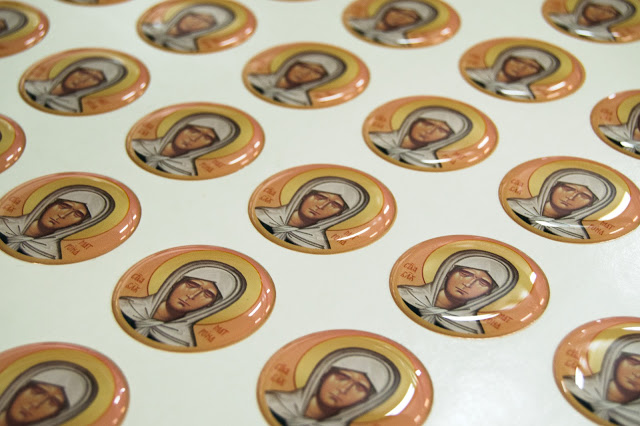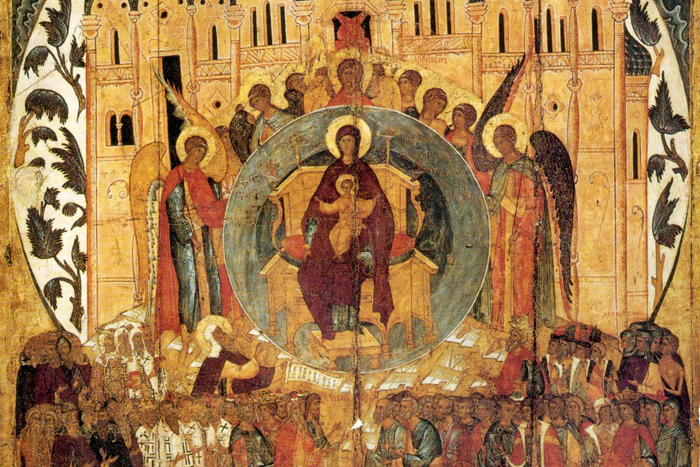
Many people who saw Belarusian icons have the impression of their being warm, kind, and homely. Belarusian icon painters approached even tragic stories in an optimistic and life-affirming way, full of love and will to live.
Belarusian icon painting developed at the crossroads of three traditions: Orthodoxy, Catholicism and the Unia. This was due to both the geographical and cultural position of Belarusian lands. Local icons demonstrate a variety of styles and trends in national iconography – from works that follow the ancient Byzantine canon to baroque and classical style.

Tastes and views of the local population had the greatest impact on the development of Belarusian iconography, the interpretation of scenes and the iconographic language of icons. By the 17th century, a more understandable graphic and pictorial style of writing, later called Primitivism, had been formed. It can be illustrated by the icons of the Latygovsky icon painter (Vitebsk region) The Nativity of Christ and Our Lady the Hodegetria of Minsk, as well as on the Deesis icon from the Stolin region and others.
The icon painters treated the storylines quite freely, as can be seen in the composition of icons. The icon Nativity of Mary, painted by the only icon painter whose name we know only because he signed it, is considered to be a masterpiece of Belarusian icon painting. The icon was created in 1649 by Pyotr Yevseyevich from Golynets.
The author preserves the main features of traditional iconography but conveys the content of the plot realistically, with many ethnographic and household details: women wearing folk headdresses – peasant “namitki“; pillows have knitted lace covers. The composition of the icon includes images of ceramic and wooden tableware, a wooden crib, a jug with wildflowers on the table.
The icon painter gives the characters specific traits corresponding to the national Belarusian type.

Iconographic art reached its heyday during the Belarusian Baroque epoch, which occurred in the 18th century. At the same time, the works of the artists of that time, many of whom came out of the lower strata of the population, preserved folk traits and identity, a unique simplicity in the perception of stories and their interpretation.

Under the influence of Baroque ideas, Belarusian icon painters created a local version of this style, which was later called “grassroots Baroque“.
Belarusian icons are characterized by such features as the depiction of natural human moods (weeping, joy, sadness) and keenly captured everyday situations (birth of a child, funeral, etc.), local landscapes, architecture, interiors, furniture, dishes, clothes, characters of peasants, nobles and princes.
You can study the ethnography of rural and urban way of life by means of icons.
Such genres of painting as still life and even a nobleman’s portrait, as well as villagers’ images appeared in Belarusian icons for the first time.

The Nativity of Christ by an unknown primitivist who was named “Latygovsky” after the place where the group of icons he painted was found is some kind of parable about Christ who came to the earth, shown and told in the language of simple and clear signs and symbols. The folklore reading of the Christmas story in the icon by the Latygovsky artist is based on the text of the Gospel of Matthew (Matthew 2:10-13) and the translated “Tale of the Three Kings”, which was popular in medieval Belarus.
In general, the overall composition of the icon and its style reminds of the Batleika puppet theater, which was widespread in these areas.
There is a baby under the star, wrapped in a white veil and a red belt (the same way as they would swaddle babies for baptism in a Belarusian village). The arms of the Mother of God are stretched out to Baby Jesus in prayer. She is shown together with Saint Joseph, and three kings in the lower left corner of the icon approach the Baby with prayer and gifts. They are also depicted together, collectively, like the figures of the Belarusian Batleika.
Folk icon painting in Belarus has become a quite distinctive phenomenon in the art of painting in Belarus as a whole. Evolving on a busy road from West to East, the folk icon organically absorbed the cultural achievements of the neighboring countries and contributed to the formation and reflection of both national and universal artistic values. At the same time, it had its own distinctive features, which embodied the hopes and tastes of the people, their eternal aspirations for the pursuit of truth, high ideals, beauty, and spirituality.



